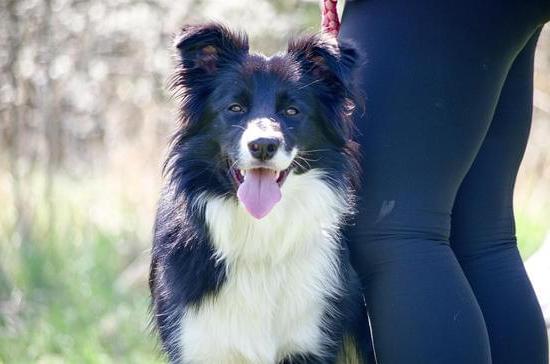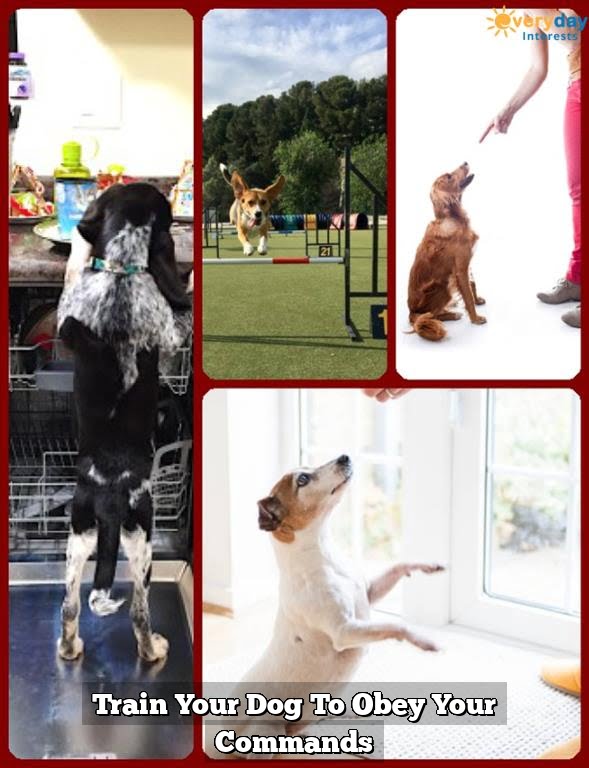Are you wondering how to train your dog? Training your furry friend is not just about teaching them to sit or stay; it plays a crucial role in their overall well-being and safety.
In this article, we will explore the significance of dog training and its numerous benefits for both the pet and their owner. Understanding your dog’s behavior, teaching basic commands, addressing common behavior problems, and advanced training techniques are just a few topics we will cover to help you create a strong bond with your canine companion.
Training a dog is more than just teaching them to obey commands; it is about ensuring their safety and enhancing their quality of life. A well-trained dog is not only easier to manage but also enjoys greater freedom as they can be included in various activities without causing disruptions or posing a threat to themselves or others.
Additionally, by understanding your dog’s behaviors and learning patterns, you can foster a deeper connection with your pet while creating a harmonious living environment.
As we delve into the different aspects of dog training, from basic commands to advanced techniques, it’s important to remember that patience and consistency are key elements in this process. Through positive reinforcement and guidance, you can positively shape your dog’s behavior and strengthen the bond between you two. So let’s embark on this journey of understanding the importance of training our four-legged companions and discover the fulfilling experiences that come with it.
Understanding Your Dog’s Behavior
Understanding the behavior of your dog is crucial in developing a strong and lasting relationship with them. Dogs communicate primarily through body language, and it’s important to be able to interpret what they’re trying to convey. For example, a wagging tail can indicate excitement or happiness, while a tucked tail might mean fear or anxiety. By recognizing these cues, you can better understand your dog’s emotions and needs.
In addition to body language, understanding how dogs think and learn is essential for effective training. Dogs have natural instincts that shape their behavior, such as the desire to establish a pecking order in the household or the inclination to follow a leader.
They also have an incredible capacity for learning when it comes to associating actions with consequences. Recognizing these aspects of your dog’s behavior will enable you to tailor your training approach to suit their specific needs and respond effectively to their actions.
Furthermore, gaining insight into breed-specific traits can enhance your understanding of your dog’s behavior. Different breeds have varying predispositions towards certain behaviors, and being aware of these tendencies can help you anticipate and address any potential issues. For instance, herding breeds may exhibit nipping or chasing behaviors due to their instinctual herding nature, while hounds may be more prone to following scents due to their keen sense of smell.
| Behavioral Cues | Dog Emotions |
|---|---|
| Wagging tail – excitement or happiness | Tucked tail – fear or anxiety |
| Yawning or licking lips – stress or discomfort | Raised hackles – alertness or agitation |
| Panting excessively – nervousness or heat regulation | Bowing down – playfulness invitation |
Basic Commands and Techniques
Training your dog to follow basic commands is essential for their safety and well-being. Here are some fundamental commands and techniques to get you started:
- Sit: Teaching your dog to sit on command is a useful way to keep them calm and controlled in various situations. Start by holding a treat close to your dog’s nose and slowly lifting it upwards. As their head moves up, their bottom should naturally lower. Once they are in the sitting position, reward them with the treat.
- Stay: Training your dog to stay in one place is crucial, especially in busy or potentially dangerous environments. Begin by commanding your dog to sit, then hold your hand up in front of them while saying “stay.” Take a small step back and reward them if they remain still. Gradually increase the distance and duration as they improve.
- Come: Ensuring that your dog returns to you when called is vital for their safety. Begin training in a quiet environment, initially using a leash if necessary. Call your dog’s name followed by “come,” then encourage them towards you with positive reinforcement and treats.
- Heel: Teaching your dog to walk calmly beside you on a leash is important for both their safety and enjoyment during walks. Start with your dog on your left side, holding the leash in your right hand, and use treats or toys to keep their attention at your side while walking.
Using positive reinforcement techniques such as treats, praise, or favorite toys can effectively motivate and reward good behavior during training sessions. Consistency is key, so be sure to practice these commands regularly with patience and encouragement.
Remember that every dog learns at their own pace, so it’s important to be patient as you guide them through learning these essential commands.
By mastering these basic commands and techniques, you’ll not only promote good behavior in your furry friend but also strengthen the bond between you and create a harmonious living environment for everyone involved.
Leash Training and Walking Etiquette
Leash training is an essential part of owning a dog, as it ensures their safety and the safety of others. A properly leash-trained dog is less likely to run into dangerous situations, such as traffic or confrontations with other animals. It also allows the owner to have better control over their pet in public spaces, preventing any unwanted interactions or disturbances.
When starting leash training, it’s important to use a harness or collar that fits comfortably and securely on the dog. This will prevent any discomfort or potential injury during walks. Begin by allowing the dog to get used to wearing the harness or collar at home before introducing the leash. This step-by-step approach will help reduce any anxiety or resistance from the dog when it comes time for actual training walks.
Teaching a dog proper walking etiquette involves more than just ensuring they don’t pull on the leash. It’s also about instilling good behavior and manners when encountering other people and animals while out on walks. It’s important for a dog to learn how to greet others politely without jumping or barking, as well as how to stay focused on their owner during a walk.
During walks, it’s beneficial to practice commands such as “heel” and “stay”, reinforcing positive behavior with treats and praise. Additionally, when encountering other dogs or people, it’s helpful to redirect your dog’s attention back to you if they become overly excited or reactive. By consistently working on these aspects of walking etiquette, both the dog and their owner can enjoy peaceful and pleasant strolls in various environments.
Addressing Common Behavior Problems
Dealing With Chewing
Chewing is a common behavior problem for dogs, especially in puppies who are teething or struggling with separation anxiety. To address this issue, it’s important to provide appropriate chew toys and redirect their attention when they start chewing on inappropriate objects. Consistency is key in teaching them what is acceptable to chew on. Using bitter apple spray on furniture and other items can also help deter chewing.
Managing Jumping
Many dogs have a tendency to jump up on people as a form of greeting or excitement. While this behavior may seem harmless, it can be problematic, especially if the dog jumps on children or elderly individuals.
One effective technique to manage jumping is to ignore the dog when they jump up and only give them attention when all four paws are on the ground. Consistently reinforcing this behavior will help them understand that jumping is not an acceptable way to greet people.
Handling Excessive Barking
Excessive barking can be a nuisance, both for the dog owner and neighbors. It’s essential to understand the root cause of the barking, whether it’s due to loneliness, fear, boredom, or territorial behavior. Once the underlying reason is identified, training can be tailored accordingly. Teaching the “quiet” command and using positive reinforcement when the dog stops barking can be effective. Providing mental and physical stimulation through regular exercise and interactive toys can also help reduce excessive barking.
By addressing these common behavior problems with positive reinforcement techniques and consistency in training, pet owners can effectively modify their dog’s behavior for a harmonious relationship.
Socialization and Training Around Other Dogs
In order to ensure that your dog is well-adjusted and well-behaved in various social settings, it is essential to focus on socialization and training around other dogs. Here are some important tips to consider when working on this aspect of your dog’s training:
- Start Early: Introduce your dog to other pets and people at an early age. The critical socialization period for dogs is between 3 and 14 weeks, so early exposure is key.
- Positive Experiences: When introducing your dog to other dogs, focus on creating positive experiences. Allow them to interact with well-behaved and friendly dogs in a controlled environment.
- Supervised Interaction: Always supervise interactions between your dog and other pets until you are confident in their behavior. This will help prevent any negative experiences that could set back their progress.
Furthermore, consider enrolling your dog in obedience classes or group training sessions to allow them to interact with other dogs in a structured environment. These classes can provide valuable opportunities for socialization while also reinforcing their training.
Remember, each dog has its own unique personality and temperament, so be patient and understanding as you work through the process of socialization. With time, consistency, and positive reinforcement, you can help your dog become more comfortable and well-behaved around other dogs, strengthening their overall social skills and behavior in public settings.
Advanced Training Techniques
Once your dog has mastered the basic commands, you may want to consider advancing their training further by introducing more complex techniques. Advanced training, such as agility training or teaching your dog tricks, not only provides mental stimulation but also strengthens the bond between you and your furry companion.
Agility training involves navigating a course of obstacles such as jumps, tunnels, and weave poles. This type of training is not only physically demanding for your dog but also requires them to follow your cues and commands closely. It is a great way to improve their coordination, focus, and overall obedience. Additionally, teaching your dog tricks like rolling over, playing dead, or fetching specific items can be a fun way to continue their learning journey.
Incorporating advanced training techniques into your routine also presents an opportunity for socialization. Participating in agility classes or trick training workshops allows your dog to interact with other pets and people in a controlled environment. These experiences help them build confidence and learn how to behave appropriately around different stimuli.
| Training Techniques | Benefits |
|---|---|
| Agility Training | Improves coordination, focus, obedience |
| Trick Training | Bonding opportunities, mental stimulation |
Consistency and Patience in Training
When it comes to training your dog, consistency and patience are key factors in achieving successful results. Consistency means using the same commands and techniques each time you train your dog, allowing them to understand what is expected of them. It also means being consistent in your own behavior and reactions, as dogs thrive on routine and predictability. By establishing a consistent training routine, you can help your dog feel more secure and confident.
Additionally, patience is crucial when it comes to training your furry friend. Dogs learn at their own pace, and some may take longer to grasp certain commands or behaviors than others.
It’s important to remain patient and understanding throughout the training process, as becoming frustrated or losing your temper can have a negative impact on your dog’s willingness to learn. Remember that every small step of progress should be celebrated, and that with time and perseverance, you will see the desired results.
To cultivate consistency and patience in dog training, it’s important for pet owners to set realistic expectations. Understand that not every day will be perfect, but by staying committed to the process with a positive attitude, you can make meaningful progress in shaping your dog’s behavior. With dedication and love, you can build a trusting bond with your pet through consistent and patient training efforts.
Conclusion
In conclusion, training your dog is not only essential for their well-being and safety, but it also plays a crucial role in strengthening the bond between you and your pet. By investing time and effort into understanding your dog’s behavior, teaching them basic commands, addressing common behavior problems, and engaging in advanced training techniques, you are not only providing mental stimulation for your pet but also fostering a deeper connection with them.
The consistency and patience required in the training process ultimately lead to a strong and lasting relationship built on trust and mutual respect.
Furthermore, the benefits of a well-trained dog extend beyond the relationship with their owner. A well-behaved and socialized dog is a joy to be around for family members, friends, and even strangers. By training your dog to behave appropriately in various situations and around other pets or people, you are contributing positively to the community as a responsible pet owner.
In essence, by dedicating time to train your dog, you are not only ensuring their safety and happiness but also enriching the quality of life for both you and your four-legged companion. The bond that is formed through training is truly special, creating a harmonious partnership based on understanding, communication, and love. So take the time to invest in training your dog – the rewards of a strong bond and well-behaved companion are certainly worth it.
Frequently Asked Questions
How Many Hours a Day Should You Train Your Dog?
The amount of time you should train your dog each day depends on their age, breed, and individual temperament. Generally, short and frequent training sessions work best, starting with just a few minutes at a time and gradually increasing the duration as your dog’s attention span grows.
It’s important to keep training sessions fun and positive to prevent boredom or frustration.
How Do You Train Your Dog Not to Run Away?
Training your dog not to run away requires consistent reinforcement of recall commands, such as “come” or “here.” Start in a safe and enclosed area, gradually introducing more distractions as your dog becomes more reliable.
Using high-value treats or toys can help reinforce good behavior and encourage your dog to stay close by. Always praise and reward your dog when they come to you, creating strong positive associations with obedience.
What Are the 5 Golden Rules of Dog Training?
The 5 Golden Rules of Dog Training revolve around consistency, patience, positivity, proper communication, and incorporating rewards effectively. Consistency in commands and expectations helps your dog understand what is required of them. Patience is key as dogs may take time to learn new behaviors.
Positive reinforcement is essential for encouraging desirable actions while proper communication involves using clear cues that are easily understood. Finally, rewards should be used strategically to reinforce good behavior without solely relying on them for compliance.

Welcome to the blog! I am a professional dog trainer and have been working with dogs for many years. In this blog, I will be discussing various topics related to dog training, including tips, tricks, and advice. I hope you find this information helpful and informative. Thanks for reading!





